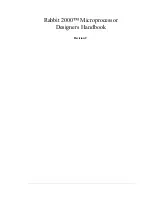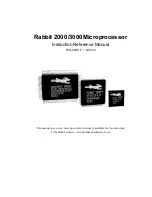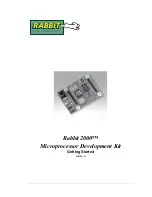
User’s Manual
500mW eXtreme Power 11Na Outdoor Bridge
122
4.4.1.6
Short Slot
: By default, it’s “Enable” for educing the slot time from the
standard 20 microseconds to the 9 microsecond short slot time
Slot time is the amount of time a device waits after a collision before
retransmitting a packet. Reducing the slot time decreases the overall back-off,
which increases throughput. Back-off, which is a multiple of the slot time, is the
random length of time a station waits before sending a packet on the LAN. For
a sender and receiver own right of the channel the shorter slot time help
manage shorter wait time to re-transmit from collision because of hidden
wireless clients or other causes. When collision sources can be removed
sooner and other senders attempting to send are listening the
channel(CSMA/CA) the owner of the channel should continue ownership and
finish their transmission and release the channel. Then, following ownership of
the channel will be sooner for the new pair due to shorter slot time. However,
when long duration of existing collision sources and shorter slot time exist the
owners might experience subsequent collisions. When adjustment to longer
slot time can’t improve performance then RTS/CTS could supplement and help
improve performance.
4.4.1.7
Tx Burst
: By default, it’s “Enable”. To Disable is to deactivate Tx Burst.
With TX burst enabled, AP will send many packets in a burst, without collision
detection and RTS/CTS for each packet. TX Burst have better throughput but
cause interference with other APs in channel.
4.4.1.8
Pkt_Aggregate
: By default, it's “Enable”
Increase efficiency by aggregating multiple packets of application data into a
single transmission frame. In this way, 802.11n networks can send multiple
data packets with the fixed overhead cost of just a single frame.
4.4.1.9
IEEE802.11H
: By default, it's “Disable”. To Enable is to use IEEE802.11H
With DFS(Dynamic Frequency Selection) enabled, radio is operating on one of
the following channels, the wireless device uses DFS to monitor the operating
frequency and switch to another frequency or reduce power as necessary.
The maximum legal transmit power is greater for some 5 GHz channels than
for others. When the wireless device randomly selects a 5 GHz channel on
which power is restricted, the wireless device automatically reduces transmit
power to comply with power limits for that channel in that regulatory domain.
Summary of Contents for OW-200N2
Page 1: ...CERIO Corporation OW 200N2 500mW eXtreme Power 11Na Outdoor Bridge User s Manual V2 0...
Page 9: ...User s Manual 500mW eXtreme Power 11Na Outdoor Bridge 9...
Page 20: ...User s Manual 500mW eXtreme Power 11Na Outdoor Bridge 20...
Page 108: ...User s Manual 500mW eXtreme Power 11Na Outdoor Bridge 108...
Page 113: ...User s Manual 500mW eXtreme Power 11Na Outdoor Bridge 113 192 168 2 1...
Page 120: ...User s Manual 500mW eXtreme Power 11Na Outdoor Bridge 120...
Page 225: ...User s Manual 500mW eXtreme Power 11Na Outdoor Bridge 225...
Page 248: ...User s Manual 500mW eXtreme Power 11Na Outdoor Bridge 248...
Page 254: ...User s Manual 500mW eXtreme Power 11Na Outdoor Bridge 254 Overview page will appear...
Page 262: ...User s Manual 500mW eXtreme Power 11Na Outdoor Bridge 262...















































